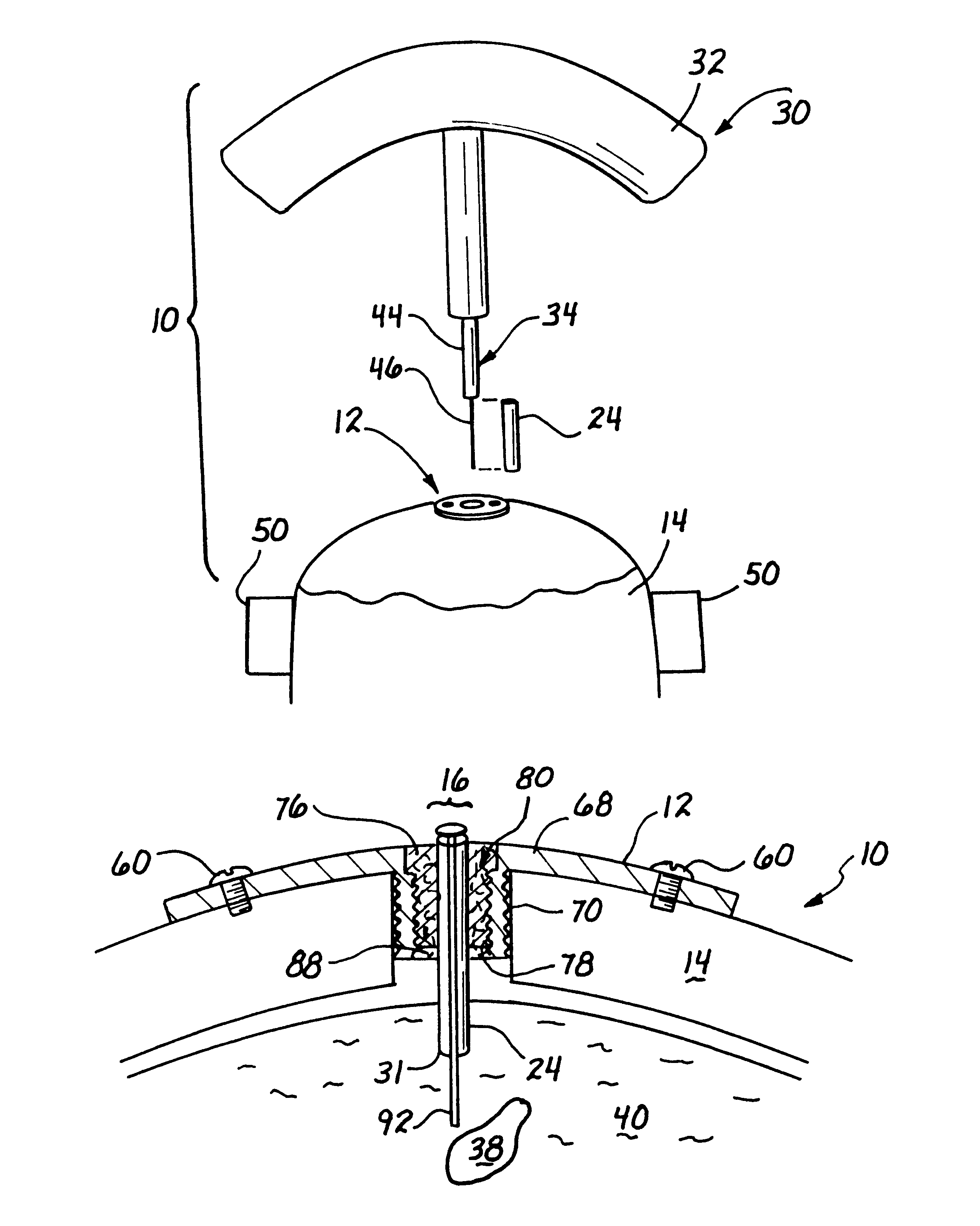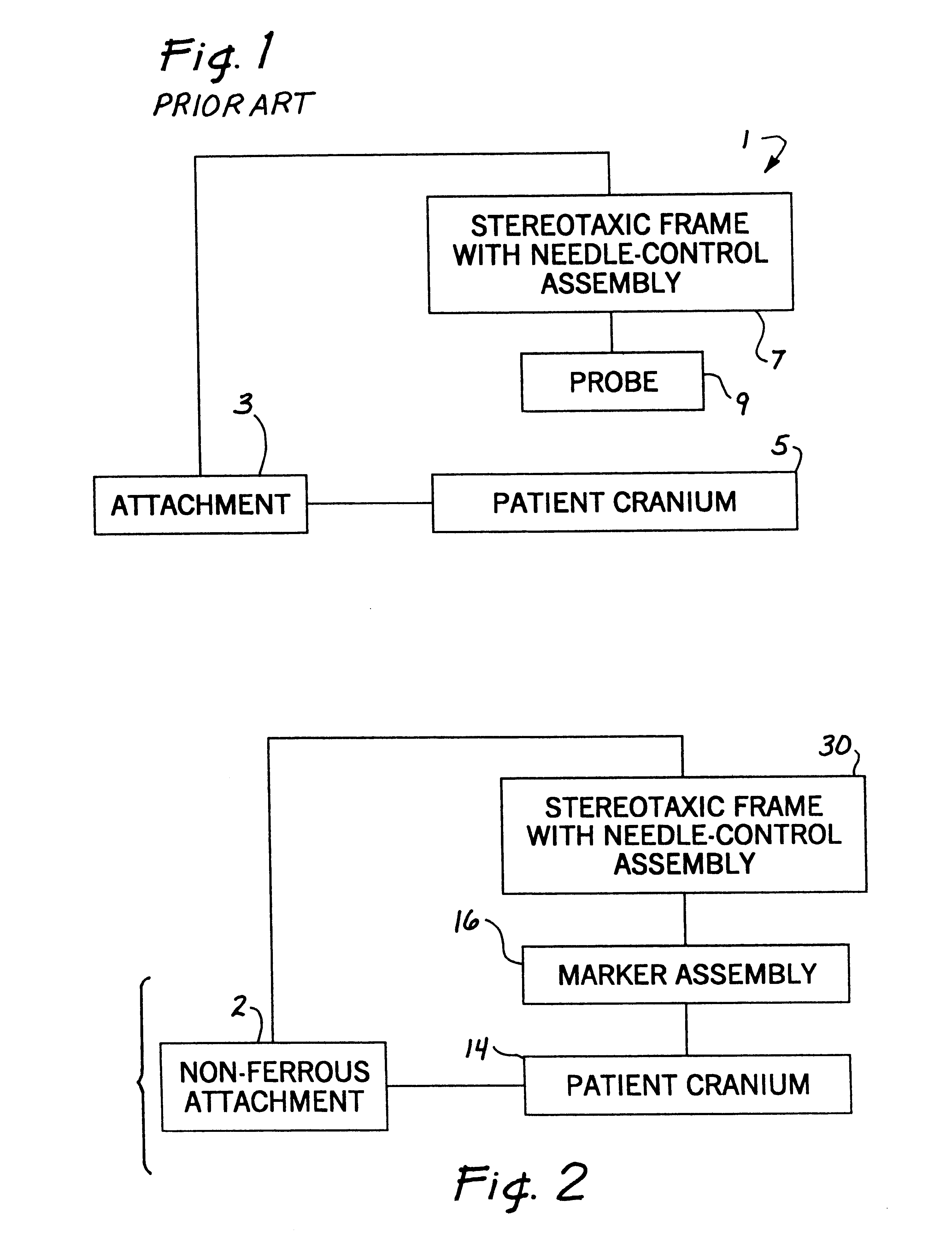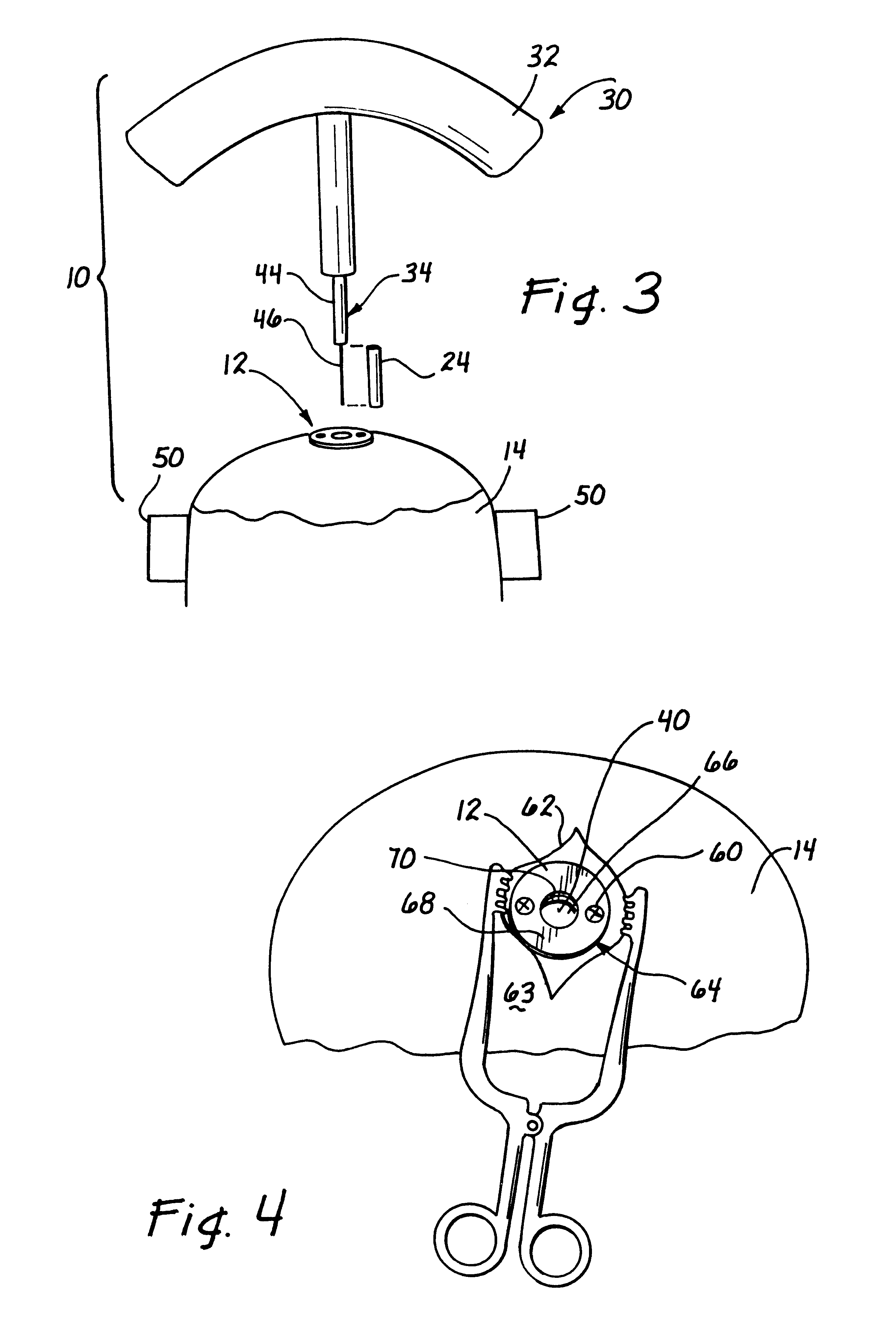Stereotaxic detachable needle extension
a needle extension and stereotaxic technology, applied in the field of stereotaxic surgical procedures, can solve the problem of certain margin of error in localization
- Summary
- Abstract
- Description
- Claims
- Application Information
AI Technical Summary
Benefits of technology
Problems solved by technology
Method used
Image
Examples
Embodiment Construction
Referring more particularly to the drawings, FIG. 1 illustrates a block diagram of a prior art apparatus 1a for positioning instrumentation in a cranium 5a of a patient. Particularly, in conventional stereotaxic surgical techniques, an attachment 3a is secured to the cranium 5a and a conventional locator device 7a is connected to the attachment 3a. A probe 9a is positioned above the cranium 5a and directed into an intra-cranial region of the cranium 5a, based on predetermined coordinates derived from earlier diagnostic analysis for example. The predetermined coordinates generally represent an approximation of a target location within the brain, for example, an area of brain tissue to be treated. Prior art analytical and medical instrumentation and procedures, which are suitable for stereotaxic surgery, are well known and for the sake of simplicity will not be detailed further herein.
A simplified block diagram of an apparatus 10 in accordance with the present invention, for more accu...
PUM
 Login to View More
Login to View More Abstract
Description
Claims
Application Information
 Login to View More
Login to View More - R&D
- Intellectual Property
- Life Sciences
- Materials
- Tech Scout
- Unparalleled Data Quality
- Higher Quality Content
- 60% Fewer Hallucinations
Browse by: Latest US Patents, China's latest patents, Technical Efficacy Thesaurus, Application Domain, Technology Topic, Popular Technical Reports.
© 2025 PatSnap. All rights reserved.Legal|Privacy policy|Modern Slavery Act Transparency Statement|Sitemap|About US| Contact US: help@patsnap.com



